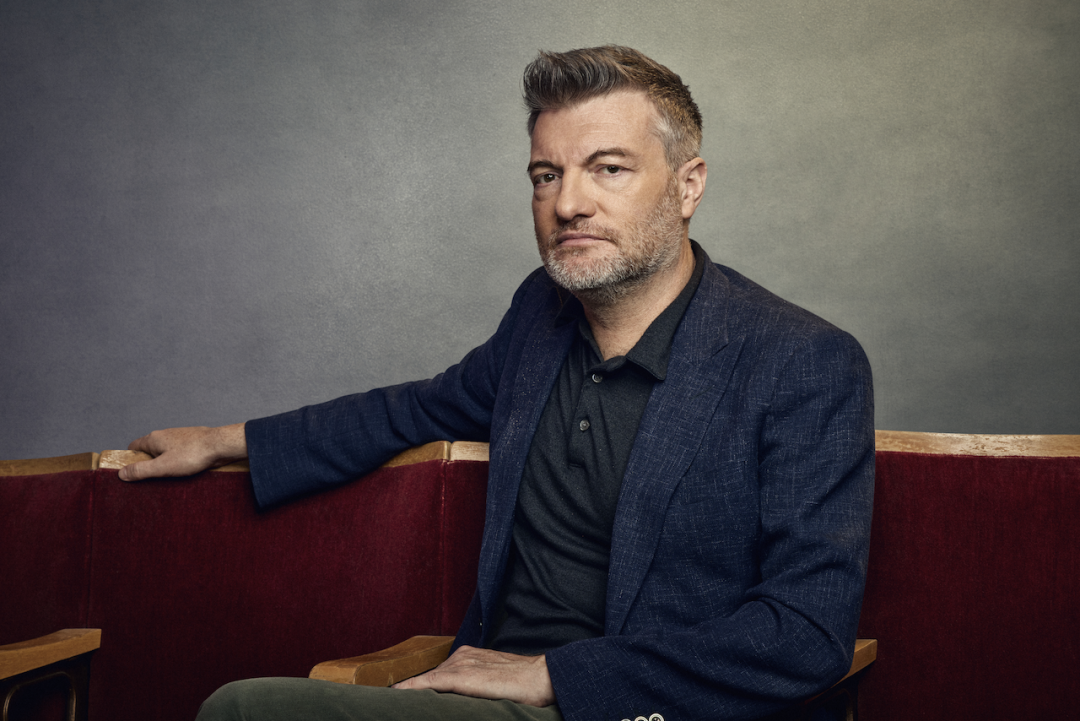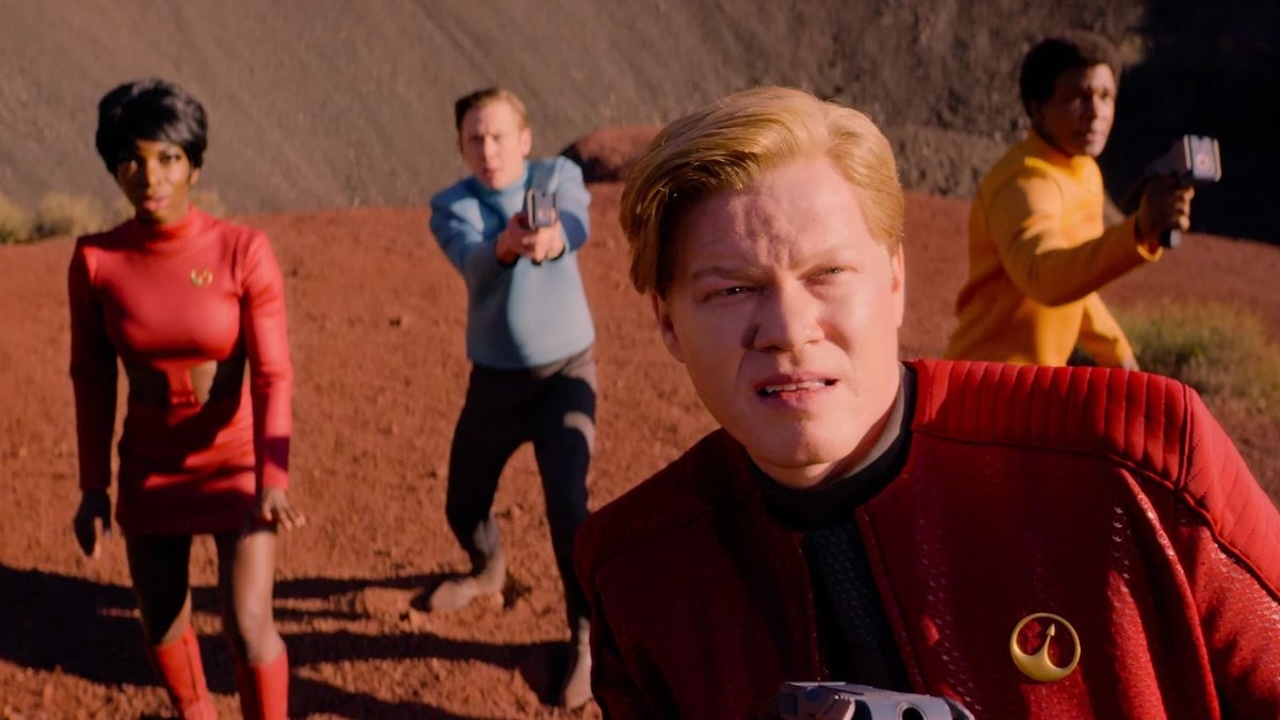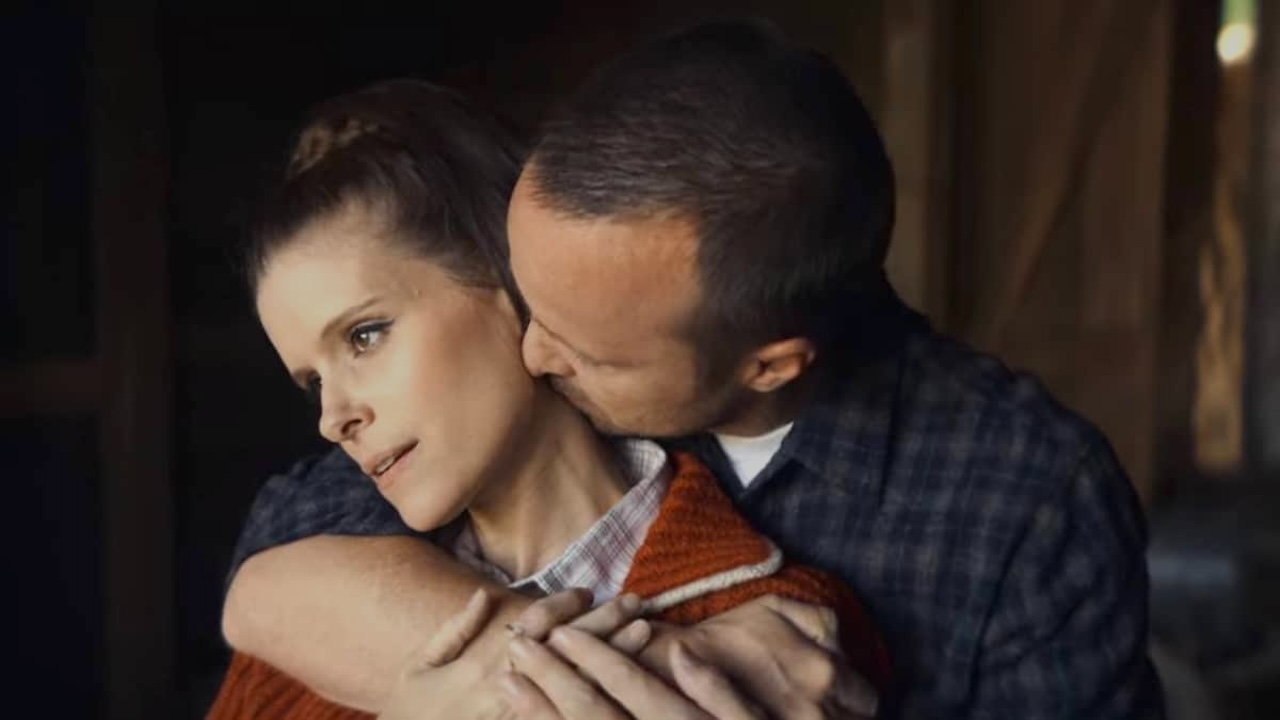With Season 7 on the horizon, Black Mirror fulfils its promise of making audiences face their anxieties and paranoias of the modern world. Creator Charlie Brooker didn’t soak in the earnestness of Rod Serling’s Twilight Zone as a sign of the times, but entered the subject matter through a lens of humor and absurdity.
His writing career began when he’d completed a zombie drama for Channel 4 in the UK called Dead Set. “In many ways it was a prototype Black Mirror because it was somewhat satirical and it was an absurd premise that could have been played for laughs, but we played straight,” recalls Brooker. He describes the film as a “zombie apocalypse in the Big Brother house.”
“It was an outrageous premise, but it was extremely hardcore, and in many ways, and grizzly and gruesome.”
That satirical undertow with a generous helping of black comedy was something Brooker hadn’t seen on television and was keen to do so. This ideation forms the basis for Black Mirror.
Black Mirror has often been reviewed as the impact of technology on our lives. Curiously, the idea of technology hadn’t really entered Brooker’s psyche when he created the show. It was more of an afterthought.
Black Mirror is satiric, dark, playful, quite extreme, weird, somewhat paranoid, and modern
“If you look at the very first season, there’s technology in it, but it’s not about that.” The show was initially conceived as a collection of short stories that were unpredictable. Eventually it became an anthology of loosely-connected episodes.

Charlie Brooker
Brooker references Twilight Zone to illustrate the feel of his show. “They’d use aliens or magic to explain how something unusual was happening. We’d use technology.” He concedes that adding supernatural elements to certain episodes muddies the Black Mirror waters. That’s how the episode Demon 79 in Season 6 was born. It tells the story of a sales assistant who must kill three people in three days to prevent the end of the world.
Season 6 “was conceived as a “sister season called Red Mirror about crime, mayhem, and death.” But it would have confused viewers, so Charlie stayed with the original title.
Not every story in Charlie Brooker’s chaotic mind is about doom and gloom. San Junipero in Season 3, is a touching love story between two women set in a virtual reality. “I was deliberately testing to see if I could write a positive story because they’d all been negative until that point. It would become so predictable if every episode left you devastated and crying. It was quite nice to leave you crying for a good reason.”
I Start With An Idea That Makes Me Laugh
Although marketed as a sci-fi series, Black Mirror swings for the genre fences.
Comedy might seem like a peculiar place to craft an episode of Black Mirror, but that’s how he begins. It’s a counterbalance to the dark thoughts swirling around his mind.
“Joan Is Awful,” [Season Six] is comic by its very nature. It’s quite frothy, and to embrace the comedy was the right decision, even though it’s still existentially horrifying when Annie Murphy’s watching the show based on her avatar. It is based on her life, and it’s really uncomfortable, unpleasant, and uncanny.”

Salma Hayek (TV Joan Tait) Photo courtesy of Netflix
After he starts with the kernel of an idea, he asks, “What is the best tone to adopt so that the audience buys it on some level?”
Brooker pitches Black Mirror in the same way he pitched Dead Set to television executives. They assumed the film was a comedy, but Brooker insisted it wasn’t.
“Shawn of the Dead” is a great zombie comedy, but I felt like for it to work correctly, you had to do your laughing at home, and not on the screen,” he states.
Aside from the mercurial tone of Black Mirror, the show also braids social commentary into its fabric. San Junipero features a bi-racial same sex couple who get married, but also encompasses euthanasia. It couldn’t simply exist as a love story about changing social attitudes. If the social commentary was too heavy-handed, “it would feel didactic and people would spit it out.”
“I think fundamentally one of the things I think that succeeded with that particular episode is that people find it a very universal story.” Some audiences wondered how straight and non-straight viewers might process the story differently. “I’m a straight guy who wrote it, and I wasn’t thinking too much about the social commentary while writing it. Originally, when I came up with the idea, it was a heterosexual couple. I flipped it, partly because I was thinking, ‘This is set in an alternative 1987 universe because same-sex marriages weren’t possible during that time.”
Brooker approached the episode in terms of how their characters feed into their sexuality. “Nobody sits down and explains the issue. Nobody sits down and has a debate about the merits of euthanasia or the fact that they’re uploading themselves to a virtual server. It’s kind of background,” he states.
“All I was thinking about in the story is, here’s these two people who meet, one falls in love with one and the other one is unsure. It’s about second chances. It’s about the technology that gives you a second chance in life.”
Charlie Brooker is only interested in a good story. “The social commentary will come out of that.”

Main cast in USS Callister episode of Black Mirror. Photo courtesy of Netflix
“USS Callister in Season Four is another good example. There wasn’t a commentary on toxic bullies. It didn’t start out as that. You had a situation in which somebody can be a tyrant with limited power and they’re making you play along with the game.”
“When you’re working out the beats of how the story works, you find all these other things that are resonating.”
Brooker enjoys reading the debates on his inconsistent creative choices after an episode has aired.
Charlie’s Messy Writing Process
The anthology format of Black Mirror allows for each season to be planned on a case by case basis in terms of stories and genre.
“I start several ideas in the draw that’s in my head. Some ideas are fairly new and some are sometimes really old and I haven’t found a way to work them into stories yet. Some ideas have been in the background for quite a while.”
“Once I know I’m ready to start, I think, ‘If this was an album, we want a good mix across the season. If we’re going to have a big love ballad of an episode, then we want a nasty punk single in there somewhere too.” This approach allows for the broadest audience to like at least one episode per season.
All the episodes aren’t written in order, nor are they all written prior to filming.
“There’s one that I wrote last year, because I had an idea that I really wanted to get down on paper. We started shooting it last year. Sometimes episodes quick to write. Joan Is Awful took three days. White Bear was my record at two days.”
“Then you get episodes where they’re fiddly. You could sometimes get one where you write in a fever dream, you fire the harpoon gun at the start, and it can only go one way. It’s logically almost on rails, and the situation is escalating, and you write like theory. Then you get ones where you need to meticulously work stuff out, and those obviously take longer.”
Charlie Brooker isn’t a fan of outlines, but “they’re a necessary evil I’ve learned. I never used to do them, I used to just write by the seat of my pants, because it’s so much trouble where I’d change my mind.”
He recalls that “Season Two nearly killed us because I tore up the scripts several times and started again. Now I’ll write an outline of six or seven pages, basically beating it out. Then I will go away and start writing.”
“What I’ve often done, secretly, is started writing before I finish an outline. I’ll get a little way into the outline, and then I’m like, ‘Oh, it’ll be quicker just to start writing the opening scenes.‘”
“I’ll write like the first eight to ten pages of the script, as quickly as I can while I’ve got enthusiasm, because then I’ve got something to work from. What I’m trying to do there is establish the tone for myself.”
He keeps writing until the characters take over the story. “When you’ve got a sudden handle on a character, they suddenly do something that surprises you, and then you know who they are.”
He uses a whiteboard to create a flowchart for the stories and characters. He also puts index cards up on a wall to thrash out the structure.
Charlie’s not afraid to start again even if he’s written ten or twenty pages and realizes that the tone or a character is wrong. “I’ll reset and embroider it like that as I go.”
He’ll write to act breaks because they’re “psychologically useful” and make sure there’s a cliffhanger at the end of each. After each act, he’ll give himself mini-rewards.
Brooker occasionally co-writes with other writers “Demon 79 was co-written with Bisha K. Ali. We thrashed out the story, we worked out all the story beats, she wrote a draft, I looked at it and then I wrote a new draft. It was really quite different. Then we glued them together and looked at the difference between the two.”
Charlie pays close attention to the endings of each episode.
“If you can end on an image, or a sequence of images, with hardly any dialogue, that means you’ve nailed it. Once I’ve locked something like that in my head, then I’ve got a direction that I’m writing towards the whole time.”
“So, in the baggy, horrible middle bit of a script, when you get lost, you can depart for a bit, jump to the end, and go back and do the plumbing that you don’t want to do later.”
“I think it’s what image comes to you as a natural process of thinking about the story as a whole. And that’s always the point where I get all excited, and think, ‘Now I know what I’m doing.’”
[More: “There’s both light and dark…There’s a lot of dark!” Black Mirror]
